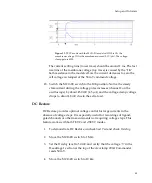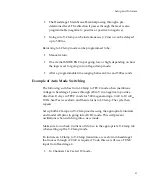
Guide
to
Electrophysiological
Recording
Root
‐
mean
‐
square
(
rms
)
noise.
This
is
essentially
the
“standard
deviation”
of
the
noise
and
can
be
calculated
using
a
computer
or
an
electronic
circuit
designed
for
this
purpose.
For
white
noise,
the
rms
noise
is
approximately
one
‐
sixth
the
peak
‐
to
‐
peak
noise.
When
reporting
measured
noise,
the
bandwidth
(
i.e.,
filter
cutoff
frequency)
must
always
be
stated.
Sources
of
Noise
Cell
and
Seal
V
‐
Clamp:
The
higher
the
resistance
(
R
)
and
the
smaller
the
capacitance
(
C
)
between
the
interior
of
the
electrode
and
ground,
the
smaller
the
current
noise.
In
whole
‐
cell
recordings
(smaller
R
,
larger
C
)
the
noise
of
the
cell
usually
dominates,
meaning
that
subsequent
noise
sources
(listed
below)
become
less
important.
I
‐
Clamp:
The
voltage
noise
is
dominated
by
the
load
resistance
but
is
also
affected
by
the
stray
capacitance.
For
a
purely
resistive
load
the
noise
is
given
approximately
by
12
√
R
μ
V
rms
(10
kHz
bandwidth),
where
R
is
the
parallel
combination
of
the
current
injection
resistor
(R
0
)
and
the
load
resistance
(
i.e.,
the
electrode
resistance
plus
input
resistance
of
the
cell).
Thus,
a
low
resistance
electrode/cell
combination
is
preferred.
A
large
stray
capacitance
will
reduce
the
noise
by
acting
like
an
RC
filter,
but
this
will
also
reduce
the
measurement
bandwidth.
Increasing
the
Capacitance
Neutralization
setting
will
improve
the
bandwidth
but
increase
the
noise.
Electrode
and
Holder
V
‐
Clamp:
Current
noise
increases
markedly
with
electrode
capacitance.
This
can
be
minimized
by
coating
the
electrode,
and
by
other
strategies.
Increasing
electrode
resistance
apparently
decreases
the
current
noise,
but
this
is
due
to
the
RC
filtering
effect
of
the
electrode
resistance
in
parallel
with
the
electrode
capacitance.
In
fact,
it
is
desirable
to
decrease
the
electrode
resistance
in
order
to
maximize
the
bandwidth
of
the
clamp,
even
if
this
apparently
increases
the
noise
of
the
recording.
63
















































